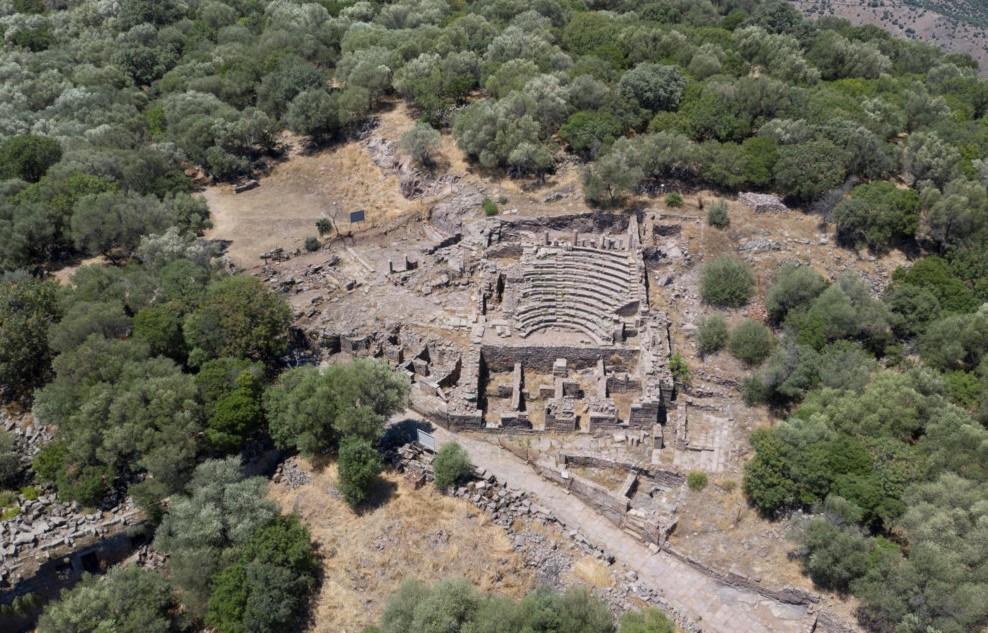
With the support of the German Archaeological Institute, international documentation work has been initiated in the agora building of the ancient city of Aigai, which dates back 2,700 years in the western province of Manisa.
“If the Byzantines had not destroyed this building, it would have remained intact except for its roof. The most important feature of this architectural and engineering marvel is that it stands without any binding,” said the head of Aigai excavation team and a faculty member of Manisa Celal Bayar University, Department of Archeology Associated Professor Yusuf Sezgin.
This year’s excavations have been initiated recently in the ancient city of Aigai, which is one of the 12 Aeolian cities established in Western Anatolia, located near the Yuntdağ Köseler neighborhood of Yunusemre district and has a history of 2,700 years.
Sponsored by the General Directorate of Cultural Heritage and Museums, Turkish Historical Society, Yunusemre Municipality and Aliağa Municipality, the works focused on the agora building, which is the symbol of the ancient city.
With the support of the German Archaeological Institute, the international documentation work continues in the agora building, which is thought to consist of 14 rooms with a height of 11 meters and a length of 80 meters.
Sezgin stated that they will transfer the historical structure to future generations, adding, “One of the most important structures known in Aigai is the agora building. This is a famous building that has been seen by everyone who comes here for thousands of years. It is 2,200 years old. It should have been 80 meters long, 11 meters high, and 15 meters in the original form. It is a stone building that has survived, albeit partially, in the best way possible to this day. It is one of the most iconic structures of the city and a structure that can come to mind for anyone who hears the name Aigai. That’s why it is important to us as well.”
“We first started the documentation work in order to transfer the structure, which has suffered a lot of damage due to both human and natural conditions, to future generations.”
Sezgin noted that all the stones in the building were coded one by one and they formed their architectural structures.
“After completing the documentation of the building, we will first make a conservation project. Because the stones in the high part of the building have moved from their places. We will continue comprehensive study. Our team is supported by the deputy director of the German Archeology Institute in Türkiye and his team. He works as an architect in such excavations. We will finish the project this year and start the restoration work next year,” he said.
Stating that Agora is a marvel of engineering, Sezgin said, “In fact, the building would have remained intact, except for its roof, had it not been touched by human hands. We found the columns in one of the shops found in the wreckage here. The pillars belonged to this building and all the lead in it had been removed. In ancient times, the columns were attached to each other with the help of lead. The Byzantines took the lead inside the columns by demolishing the buildings to meet the lead need.”
“If the Byzantines did not demolish this building; except for its roof, it would have remained intact. The most important feature of this architectural and engineering marvel is that it stands without any binding.”